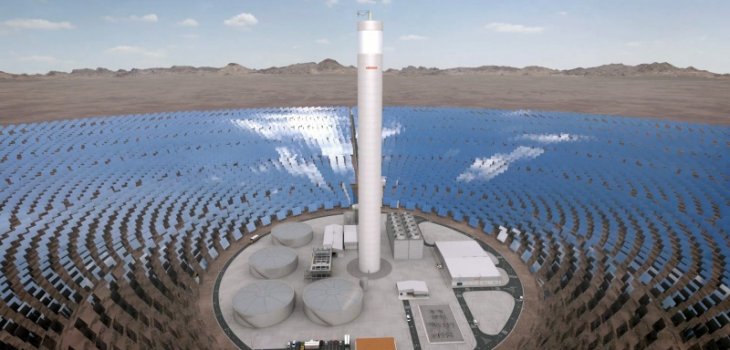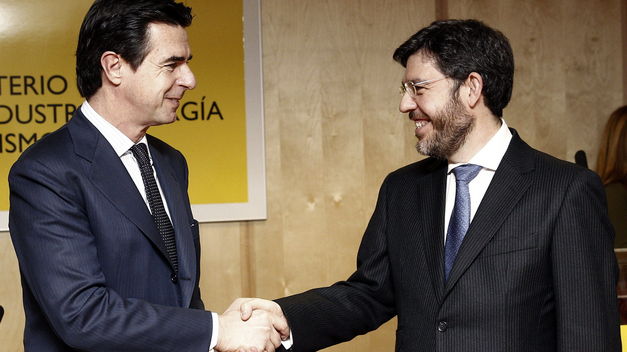California has cemented its place as America's solar leader, according to the recently-released U.S. Solar Market Insight 2014 Year in Review, and stands poised to become the first state in the nation to have 10 gigawatts (GW) of installed solar capacity – enough to power nearly 2.5 million homes.
California saw three concentrated solar power plants come fully online in 2014: the Genesis project in Riverside County and the Ivanpah and Mojave projects in San Bernardino County, collectively accounting for another 767 megawatts of new generating capacity. Instead of traditional solar panels, concentrated solar projects use sunlight to heat water or another liquid, ultimately creating steam that can be used to turn turbines and generate electricity.
In 2014, California added 4,316 megawatts (MW) of solar electric capacity, bringing its total to 9,977 MW – just 23 MW short of cracking the 10 GW barrier. The report went on to point out that California had big increases last year across all solar sectors. Of the new capacity added, 615 MW were residential, 307 MW were commercial and 3,395 MW were utility scale. Together, these installations represented an $11.7 billion investment in the state.
"When it comes to creating clean energy jobs and protecting the environment, California is leading by example," said Rhone Resch, president and CEO of the Solar Energy Industries Association (SEIA). "To put the state's remarkable progress in some context, today California has 10 times more installed solar capacity than the entire nation had in 2007. We congratulate Gov. Brown, his administration, legislative leaders and the people of California for being the ‘little engine that could' and demonstrating to America the viability, as well as the reliability, of clean, affordable solar energy."
California's notable 2014 projects include:
· Desert Sunlight, which was recently completed by developer First Solar. This photovoltaic (PV) project has the capacity to generate 550 MW of electricity – enough to power more than 160,000 California homes.
· At 250 MW, Mojave Solar is also among the largest solar installations in California. Completed in 2014 by Abengoa Solar, this concentrating solar power (CSP) project has enough electric capacity to power more than 61,000 homes.
· Many large retailers in California also installed solar installations last year, including Walgreens, Johnson & Johnson, Walmart and IKEA.
· Campbell's Soup installed one of the largest corporate PV systems in the state with 2,300 kilowatts (kW) of solar capacity at their location in Sacramento.
The residential market also continued to flourish last year, with installed system prices dropping again – and down a total of 49 percent since 2010. The upswing in residential installations is expected to continue in the foreseeable future, especially in light of a new report by the California Energy Commission, which shows that more than a quarter of all new homes being built in Southern California are being constructed with solar energy systems. Presently, there are more than 2,000 solar companies at work throughout the value chain in California, employing 54,700 people. These companies provide a wide variety of solar products and services ranging from solar system installations to the manufacturing of components used in PV panels.
From an environmental perspective, solar installations in California are helping to offset more than 11.7 million metric tons of harmful carbon emissions, which is the equivalent of removing 2.5 million cars off state roads and highways.
"Today, the U.S. solar industry employs 174,000 Americans nationwide – more than tech giants Apple, Google, Facebook and Twitter combined – and pumps nearly $18 billion a year into our economy," Resch added. "This remarkable growth is due, in large part, to smart and effective public policies, such as the solar Investment Tax Credit (ITC), Net Energy Metering (NEM) and Renewable Portfolio Standards (RPS). By any measurement, these policies are paying huge dividends for both the economy and environment."
"When it comes to creating clean energy jobs and protecting the environment, California is leading by example," said Rhone Resch, president and CEO of the Solar Energy Industries Association (SEIA). "To put the state's remarkable progress in some context, today California has 10 times more installed solar capacity than the entire nation had in 2007. We congratulate Gov. Brown, his administration, legislative leaders and the people of California for being the ‘little engine that could' and demonstrating to America the viability, as well as the reliability, of clean, affordable solar energy."
California's notable 2014 projects include:
· Desert Sunlight, which was recently completed by developer First Solar. This photovoltaic (PV) project has the capacity to generate 550 MW of electricity – enough to power more than 160,000 California homes.
· At 250 MW, Mojave Solar is also among the largest solar installations in California. Completed in 2014 by Abengoa Solar, this concentrating solar power (CSP) project has enough electric capacity to power more than 61,000 homes.
· Many large retailers in California also installed solar installations last year, including Walgreens, Johnson & Johnson, Walmart and IKEA.
· Campbell's Soup installed one of the largest corporate PV systems in the state with 2,300 kilowatts (kW) of solar capacity at their location in Sacramento.
The residential market also continued to flourish last year, with installed system prices dropping again – and down a total of 49 percent since 2010. The upswing in residential installations is expected to continue in the foreseeable future, especially in light of a new report by the California Energy Commission, which shows that more than a quarter of all new homes being built in Southern California are being constructed with solar energy systems. Presently, there are more than 2,000 solar companies at work throughout the value chain in California, employing 54,700 people. These companies provide a wide variety of solar products and services ranging from solar system installations to the manufacturing of components used in PV panels.
From an environmental perspective, solar installations in California are helping to offset more than 11.7 million metric tons of harmful carbon emissions, which is the equivalent of removing 2.5 million cars off state roads and highways.
"Today, the U.S. solar industry employs 174,000 Americans nationwide – more than tech giants Apple, Google, Facebook and Twitter combined – and pumps nearly $18 billion a year into our economy," Resch added. "This remarkable growth is due, in large part, to smart and effective public policies, such as the solar Investment Tax Credit (ITC), Net Energy Metering (NEM) and Renewable Portfolio Standards (RPS). By any measurement, these policies are paying huge dividends for both the economy and environment."
termosolar, Concentrated Solar Power, Concentrating Solar Power, CSP, Concentrated Solar Thermal Power, solar power, solar energy, U.S., PV, CSP, California, Abengoa,





























